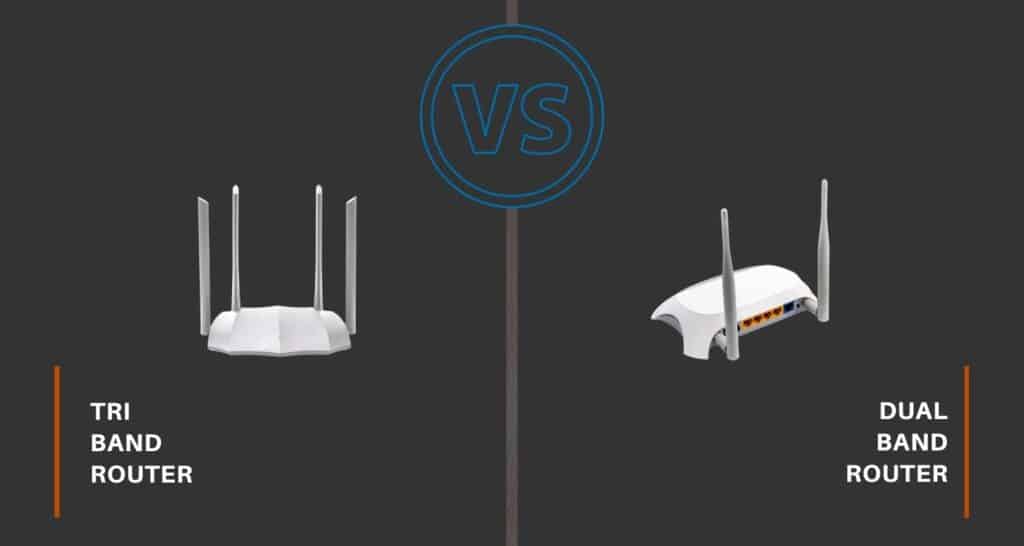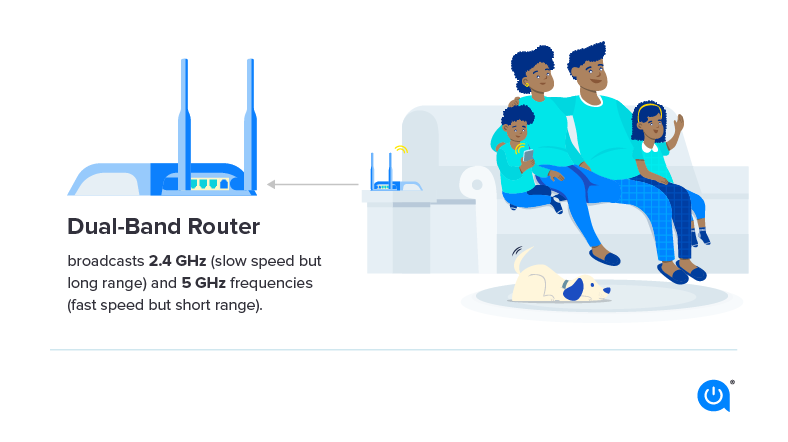As the digital landscape continues to evolve, so does the demand for faster, more reliable internet connections. In an era where multiple devices are connected simultaneously for activities like streaming, gaming, and telecommuting, the necessity for robust wireless technology is paramount. This is where dual-band and tri-band wireless access points (WAPs) come into play, offering significant advantages to ensure seamless connectivity. The importance of these advanced access points can be understood through various factors including performance, network management, and future scalability.
Dual-band WAPs operate on two frequency bands: 2.4 GHz and 5 GHz. This dual functionality allows users to balance their bandwidth needs effectively. The lower frequency 2.4 GHz band provides a wider coverage area, while the 5 GHz band offers higher speeds for activities that require more bandwidth. Tri-band systems take this a step further by introducing an additional 5 GHz band, which further enhances the capability to handle numerous devices and demanding applications. This multi-band approach is essential for environments rich in technology, especially households or offices with multiple users and devices vying for bandwidth.
Understanding the dynamics of dual-band and tri-band wireless access points is crucial not only for individuals seeking to improve their home networking experience, but also for businesses investing in optimal network solutions. Both types of access points enhance connectivity through better resource allocation, reduced latency, and fewer interference issues. As we delve deeper into the relevance of dual-band and tri-band systems, we’ll explore how they meet modern connectivity demands while ensuring higher productivity and satisfaction for users.
In this article, we’ll discuss the characteristics of dual-band and tri-band wireless access points, their pros and cons, and situations where each might be the ideal choice. By the end of this exploration, you’ll be equipped with the knowledge to select the best solution for your unique networking needs, ensuring you can capitalize on the advancements in wireless technology.
Understanding Dual-Band Wireless Access Points
Dual-band wireless access points have become a popular choice for home and small office environments due to their flexibility and performance capabilities. By leveraging both the 2.4 GHz and 5 GHz frequency bands, these access points provide users with options that suit different network demands. The 2.4 GHz band, while slower, boasts greater range and is better at penetrating walls and other physical barriers. This makes it ideal for basic web browsing, email, and lighter applications that do not require high bandwidth or speed. In contrast, the 5 GHz band can accommodate faster data transfer rates, making it more suitable for high-performance activities such as streaming HD content, online gaming, or video conferencing.
The ability to operate on dual frequencies allows for efficient network management, helping to reduce congestion and interference. In scenarios where multiple devices are connected simultaneously, dual-band access points can intelligently distribute traffic between the two bands. For instance, a user streaming a movie on one device can utilize the 5 GHz band, while another device may connect on the 2.4 GHz band for regular internet browsing. This division of labor prevents one band from becoming overwhelmed, ensuring stable performance across the network.
While dual-band access points offer numerous benefits, they come with their own set of challenges. The performance on the 5 GHz band can diminish with distance, as higher frequency signals do not travel as far as lower frequencies. Therefore, ductile placement becomes vital to ensure optimal coverage in larger spaces. Moreover, as the number of connected devices increases, the performance may still suffer if not managed effectively. Troubleshooting latency issues in high-demand environments requires understanding how to best utilize dual-band technology and adjust settings accordingly. Overall, dual-band access points represent a solid balance between range and speed for most home and small office networks.
Exploring Tri-Band Wireless Access Points
Tri-band wireless access points extend the capabilities of dual-band systems by introducing a third 5 GHz band. This additional band serves as a dedicated lane specifically designed to handle high-bandwidth activities, thereby further enhancing performance. Tri-band technology is particularly advantageous in environments with many connected devices, like smart homes or offices that have numerous applications running concurrently. By offloading traffic to this additional band, users can experience lower latency and fewer interruptions during peak usage times.
The architecture of tri-band access points allows for superior distribution of available bandwidth. For example, devices that demand high bandwidth, such as gaming consoles or 4K streaming devices, can benefit from the dedicated 5 GHz band. Meanwhile, other devices can continue to connect on the 2.4 GHz band, maintaining a reliable connection without sacrificing performance. This tri-band system effectively creates a more efficient network, capable of handling multiple users and demanding applications without noticeable lag.
However, it is essential to consider the cost versus performance ratio when evaluating tri-band access points. While they offer advanced features and better performance, they typically come with a higher price tag than dual-band models. For households or businesses with only a few devices, the investment may not yield significant benefits over a dual-band system. Additionally, the complexity of managing a tri-band network can be higher, necessitating a more adept understanding of network management. Carefully weighing the advantages of tri-band access points against their cost and complexity will help users make informed decisions tailored to their specific needs.
Performance Factors of Dual-Band and Tri-Band Systems
When assessing the performance of dual-band and tri-band wireless access points, several factors come into play. Network congestion is one of the most critical issues that affects performance. As more devices connect to a network, bandwidth gets divided, leading to slower speeds and potential connectivity issues. Dual-band access points help mitigate these issues through frequency separation, while tri-band systems take things a step further by offering an additional band that can relieve congestion even further. By distributing network traffic more evenly, users enjoy better overall performance—especially critical during peak usage times.
In addition to handling traffic, the capabilities of dual-band and tri-band systems can dramatically impact the quality of services rendered. Applications that require high data transfer rates—like video streaming, online gaming, and virtual conferencing—benefit significantly from the improved speed and responsiveness provided by these advanced WAPs. With faster data rates and efficient bandwidth allocation, users participating in high-demand activities can enjoy a seamless experience with reduced buffering and latency. This is paramount in today’s world, where user experience can dictate overall satisfaction and productivity.
Moreover, interoperability and compatibility with legacy devices is another consideration when determining the performance factors of dual-band and tri-band systems. Many older devices may only support 2.4 GHz connections, which may limit the speeds available for those devices. Dual-band systems provide an excellent solution, allowing these devices to connect while newer, more capable devices utilize the 5 GHz band. Tri-band access points maintain this flexibility while also ensuring that high-bandwidth needs are met. Both solutions prioritize versatility, ultimately allowing for a diverse range of connected devices to coexist and perform well within the same network ecosystem.
Conclusion
As technology advances and the number of connected devices continues to grow, the importance of dual-band and tri-band wireless access points becomes glaringly evident. These technologies play a crucial role in ensuring seamless connectivity, enhanced bandwidth, and overall network efficacy. Dual-band WAPs offer a balanced solution for optimal coverage and speed, serving diverse usage scenarios ranging from casual browsing to office tasks. In contrast, tri-band access points elevate network performance further, providing dedicated lanes for high-bandwidth activities, thus making them invaluable for environments with high demands.
The decision between dual-band and tri-band systems ultimately hinges on your specific needs, budget, and network environment. Evaluating those factors allows users to make informed choices about which type of access point to invest in, maximizing their overall networking experience. With the capacity to reduce congestion, enhance speed, and accommodate varying device requirements, both dual-band and tri-band wireless access points are essential tools for tackling the challenges posed by modern connectivity needs.
In today’s fast-paced, technology-driven world, maintaining a strong and reliable internet connection has become synonymous with productivity and enjoyment. By understanding the critical components of dual-band and tri-band wireless access points and how they address the challenges of multiple device connectivity, users can optimize their networks to support an increasing number of gadgets and applications. Investing in these advanced solutions not only improves current performance but also ensures your network is future-proofed, prepared to handle the evolving demands for the years to come. Embracing dual-band and tri-band technologies is a proactive step towards securing an exceptional online experience, making it an integral consideration for both home and workplace environments as we advance.




